Dongchang Lake Scenic Area
Dongchang Lake Scenic Spot, located in the southwest of Liaocheng City, a famous national historical and cultural city, belongs to Dongchangfu District and is a national AAAA-level tourist scenic spot.
Dongchang Lake was built in Xining, Northern Song Dynasty, in 1070. It was excavated on the basis of the original moat. Its east, south, West and North are separately bounded by Liuyuan Road, Hunan Road, Huxi Road and Dongchang Road, the main road of Liaocheng District, covering an area of about 6 square kilometers. The well-known Beijing-Hangzhou Grand Canal passes through scenic spots.
Dongchang Lake, Hangzhou West Lake and Nanjing Xuanwu Lake are known as "three famous lakes in the whole country". Known as "West Lake in the South and Dongchang in the north", Dongchang Lake is a bright pearl in Jiangbei Water City.
Essential information
Dongchang Lake , also known as Carmine Lake, and Hangzhou West Lake, Nanjing Xuanwu Lake, known as the "three famous lakes in the city of the whole country", known as "West Lake in the south, Dongchang in the north", is a bright pearl of Jiangbei Shuicheng.
The beautiful Dongchang Lake surrounds the ancient city of Liaocheng for a week. It was built in the third year of Song Xining (A.D. 1070). At that time, because of the construction of the city wall and the excavation of the moat, after generations of open, now the area has reached 6.3 square kilometers, and the West Lake of Hangzhou, is 4-5 times as large as the Daming Lake of Jinan. Dongchang Lake is composed of eight lake areas and more than 20 water surfaces. Its shoreline is 16 kilometers long. It is a rare large lake in the north of the Yangtze River in China. It has added spirit to the city of Liaocheng and is the most beautiful point of Liaocheng. She uses the water of the Yellow River as its source, and accumulates about 16.8 million cubic meters of water. The water depth is 3-5 meters, which is endless all the year round. Dongchang Lake is a national fishing base with clear water and pleasant scenery. It is suitable for the development and construction of water recreation projects.
The fresh and pleasant natural environment of Dongchang Lake and the simple and honest ancient architectural style of the ancient urban area reflect each other. There are lakes and lakes in the city, and cities, lakes and rivers in one, forming the unique lake city style of Jiangbei Shuicheng. Thousands of lakes are as clear as a mirror, and thousands of lotuses are as white as snow and as pink as jade. The center of Dongchang Lake is an ancient city covering an area of one square kilometer, which is square and well preserved. It centers around Guangyue Tower in Ming Dynasty. The streets and alleys around it have distinct latitudes and longitudes and cross vertically to form a checkerboard grid skeleton. The old Grand Canal goes around the lake from south to North like a jade belt. The lakeside park, like a large green ribbon running through the north and south, is mosaic along the western coast of Dongchang Lake. Guangyue Tower, Iron Tower, Shanshan Guild Hall, Fu Sinian Exhibition Hall, Kong Fansen Memorial Hall and other well-known cultural relic units at home and abroad, like pearls glittering in the city lakeside. Historic and literary masterpieces such as Water Margin, Strange Tales from Liaozhai, Jin Ping Mei, Travel Notes of the Old Disabled also have an inseparable historical origin with Dongchang Lake. These communities show the rich cultural heritage of Dongchang Lake and the broad prospects for the development of tourism in Lake City.
Dongchang Lake is divided into eight Lake surfaces of different sizes by urban roads. In order to enhance the regional visibility, the eight Lake surfaces are named separately by referring to the naming experience of West Lake District in Hangzhou, combining with Liaocheng's history and culture, literati allusions and natural features of the lake area, which are collectively called Dongchang Lake. Eight of them are Dingjiakeng, located in the east of the ancient city and south of Dongguan Street. According to records, the former residence of Ding Zhifang, a historical celebrity in Liaocheng, was located in the north of the area. During the Ming Dynasty, after Emperor Jianwen was overthrown by Zhu Ding, Ding Zhifang insisted on the legacy of "one minister does not protect two principals" and was killed. Zhu Ding felt that his loyalty had bestowed a large pit, named Ding Jiakeng; Yanwu Lake, located in the southeast of the ancient city, was named for the site of the Performing Arts Hall in the household area; Ming Zhu Lake, located in the southwest of the ancient city, was the Under the sunshine, the open lake shines like a pearl, which means bright and pure. Wangyue Lake, located on the west side of the ancient city, means looking up to Guangyue and Taidai. Lotus Xianghu Lake is located on the south side of Dongchang Road and the east side of Hubin Road. Because lotus is planted everywhere in the lake area, it is named Hexiang Lake. Qinhu Lake is located in the southeast of Fenghuangtai and the north of Jingming Road. The Lake area is small and exquisite, like a guqin, named Qinhu, which implies playing the beautiful movement of Shuicheng with piano and string; Jingming Lake, located in the northeast of the ancient city, is surrounded by urban buildings, with few wind and waves, and the lake surface is like a mirror, so it is named Jingming Lake; Lingdong Lake, located in the East of the ancient city and north of Dongguan Street. The Lake area is divided into several lakes of different shapes and sizes by islands, overlooking from a height, just like a string of bells embedded in the ancient canal, so it is named "Lingdong Lake". There are eight islands in the lake area, including Celebrity Island, Huxin Island, Baihua Island, Moon Island and South Guam Island. In addition, three islands have been named in the new plan. Huludao is located in Lingdong Lake scenic area. There are many sculptures on the island, named Huludao, which not only reflects its own characteristics, but also expresses the meaning of blessing. Zhuangyuan Island is located in the Lingdong Lake Scenic Area. There is an ancient memorial archway and corridor of Zhuangyuan. Around the corridor, there are more than ten stories of Zhuangyuan who went out from Liaocheng in successive dynasties, named Zhuangyuan Island, which implies that the style of Shangwen in Liaocheng is continuing. Yunze wetland is the only wetland landscape in Yanwu Lake area. The abundant aquatic plants are patchy, overlooking from the air, just like patches of clouds embedded in them, so they are called Yunze Wetland. Ancient Yunmengze includes Yunze and Mengze. Mengze is in the south of the Yangtze River and Yunze is in the north of the Yangtze River.
Introduction to scenic spots
In the Dongchang Lake Scenic Area, there are scattered with the Ming Dynasty Guangyue Tower, one of the largest existing wooden structures in ancient China, the Song Dynasty Iron Tower, the fine Qing Dynasty building Shanshan Guild Hall, one of the four private libraries in Qing Dynasty, Haiyuan Pavilion and other places of interest, as well as the Fu Si Memorial Hall, the National Hero Fan Jia Xian Memorial Hall, the Kong Hall. Cultural attractions such as Comrade Fansen Memorial Hall. Dongchang Lake District has now built a large number of tourist attractions and entertainment spots such as Liaocheng Fishing Base of China Diaoyu Association, Dongchang Lake Amusement Park, Jiangbei Water Bamboo Village, Beach Bath, Yacht Wharf, Huxingdao, Hexiang Island, Celebrity Island, Baihua Island, Moon Island, Nanguam Island, Zhuangyuan Island, Huludao Island, Yunze Wetland, Fuchunting Pavilion, Shuicheng Pearl Theater and Watercity Eye. Facilities, along the lake more than 30 miles of green belt has been basically improved, Huxi Park, Xiguan 21 hole tour stone bridge, Beiguan tour stone bridge and a number of other key construction projects have been completed.
Dongchang Lake was built in Song Xining three years (A.D. 1070). It was excavated on the basis of the original moat. The existing water area is 6.3 square kilometers. It is a rare large intra-city Lake in Jiangbei area of China. Dongchang Lake diverts water from the Yellow River. Its water depth is 3-5 meters. The lake is clear without any industrial pollution. The scenery is pleasant, which makes tourists linger and forget to return. Dongchang Lake Center is a square Liaocheng ancient city with a history of 1,000 years. With Guangyue Tower in the middle of the ancient city as the center and radiating in all directions, the ancient city forms four main roads in the east, west, north and south of the city. Other streets and lanes are also distinct in latitude and longitude, crossing vertically and forming a checkerboard grid skeleton.
The traditional architectural style of white walls, grey tiles and city roofs is still preserved in the ancient urban residential buildings. On both sides of the ancient Beijing-Hangzhou Canal, streets and alleys are arranged, and various shops and houses are built along the river. The large and small piers paved with bars and stones, the vigorous ancient locust trees, the Iron Pagoda of Longxing Temple in Song Dynasty and the building of Shanxi Guild Hall in Qing Dynasty will still make people appreciate the prosperity and splendor of ancient Liaocheng in the prosperous period of canal transportation. By effectively exploiting and utilizing these unique tourism resources, an important part of Dongchang Lake Scenic Area has been formed, namely, lakeside scenic area, ancient city cultural area and canal scenic area.
Main attractions
Beach bathing place
The beach bathing ground is the most beautiful summer resort in Liaocheng in summer. It is also a playground integrating tourists'entertainment and play. It is 500 meters long, 120 meters wide, 95,000 square and 7,800 square. The bottom of the lake is sloping with fine sand. In order to increase tourists'interest in tourism, there are water slides, green crocodiles, pirate boats, couples' houses, video halls, fast food restaurants and so on.
Dragon character tablet
The tablet is inscribed by Yang Xuanting, a famous calligrapher. It stands 3.5 meters high and 1.6 meters wide in October 1987. There are two dragon opera beads carved above and on both sides of the tablet. The tablet is 2.5 meters high and 1.25 meters wide. It has a unique style and shines with the artistic brilliance of Chinese hieroglyphs. Yang Xuanting, a native of Liaocheng City, loves calligraphy from an early age. He writes Li Dazhao's inscriptions, which are highly praised. His works are often presented to international friends as precious gifts of our country. For this reason, people cherish them very much, they are well preserved and have attracted many tourists. He is a great treasure of Dongchang Lake and Liaocheng.
Jiangbei reservoir
Jiangbei Shuizhai is located on the north side of Xiguan Road and is opposite to Huxin Island. Its architecture is all bamboo-wood structure. It has unique shape and ingenious conception. It is a water upstream paradise with novel structure. It is the best place for visitors to eat, meet friends and sightseeing. It is also the only water bamboo village in the north of the Yangtze River with strong Jiangnan flavor and propaganda. The elegant and unique water village, with a 131 square metre hall in the middle, offers visitors a taste of fish from the lake, with corridors and curved bridges connecting each other.
city wall park
Ring City Park is an open park built on the original moat. It is surrounded by lake water and ancient city. It is an ideal place for people to take a walk, recreation and enjoy cool scenery. Stone lake bank is on the right side, winding and graceful. There are trapezoidal platforms on the bank slope, planting flowers, plants, lawns and green spaces, and adorned with pavilions, terraces and stone benches.
Lake Island
Located in the northwest part of Dongchang Lake, Huxin Island was built in 1984. It is a unique tourist attraction in Dongchang Lake. Its interior environment is elegant and unique, its architecture is exquisite and magnificent, all kinds of famous flowers and plants contend with each other, and its surroundings are vast with smoke, fishing and boating. Yixiangzhai, an ancient building, is mainly used to receive visitors to the island, and it is also a good place for tourists to flourish and splash ink. The Cuiyuan Garden and Chuihua Gate adjacent to Yixiangzhai are ancient buildings, with green tiles and white walls and ancient fragrance. In addition, there are viewing terraces, Qinyuan Garden, Diaoyutai and Dengdao Wharf, which show their respective colors.
Lotus Garden
Located at the northwest end of Huancheng Lake, Lotus Fragrance Garden is an open ornamental park with open lake surface and lotus root. It is not only full of lotus and lotus, but also rich in reeds and grass. The lotus incense Pavilion in the garden, with heavy eaves, hexagonal warping, ridge decoration furry beasts, exquisite and unique architecture, is surrounded by lake water, with seats between the pillars for people to rest, and a water bridge linking the lake shore.
Fishing base
The fishing base is located between the north gate and the west gate of the ancient city, with a total length of 850 meters. It is planned and designed by the Department of Architecture, Tianjin University. It is now a good fishing place for Dongchang Lake. On May 27, 1989, the China Fishing Association officially named the Huancheng Lake as "Liaocheng Fishing Base of the China Fishing Association" and invested 100,000 yuan in the construction of high-grade fishing areas and guest houses in Longzibeinan to host the national fishing competition.
Dragon-boat Racing
Dragon Boat Festival and dragon boat race are the traditional folk customs in the water villages of the south of the Yangtze River. Over the past ten years, dragon boat races have been held on Dongchang Lake in Liaocheng during the May 1st, 11th and Dragon Boat Festival. Many cities in Liaocheng Province have also learned dragon boat rowing skills. Dragon boat racing has gradually become a new folk custom in Shandong and even in the north.
Guangyue tower
Guangyue Tower is the symbol of Liaocheng, a famous historical and cultural city in China. It is also called three famous buildings in China with Yueyang Tower and Huanghe Tower. Located in the center of Liaocheng Ancient City, Guangyue Tower is a cross-ridge pavilion with four eaves and Xieshan. It consists of piers and stones and the main building. Piers and abutments are square prismatic masonry abutments, 9 meters high. Four-storey main buildings are built on piers and abutments, 24 meters high. Guangyue Tower is 33 meters high and its four sides are long, that is, the ancient nine feet and nine feet. In ancient China, nine is the pole of the number of yang, which implies that it can not be surpassed.
In the second year of Hongwu in Ming Dynasty, Chen Yong, commander of Dongchang Guard, rebuilt the Tucheng built by Song Xining in three years to be a brick city in order to fight against the remnants of Yuan Dynasty. In the seventh year of Hongwu, the Tuanmu Tower was built up to 100 feet, so it was first named "Tuanmu Tower" and then "Dongchang Tower" because of its place. At that time, the purpose of building this building was to "tighten the air, peep at the enemy, report to the police." With the consolidation of the Ming Dynasty's rule, the military role of this building was soon forgotten, but Guangyue Tower was famous for its grandeur and grandeur.
Guangyue Tower is a scenic spot in Western Shandong Province. Many emperors, generals, and scholars have to go upstairs to express their feelings when they pass Liaocheng. Emperor Qianlong, who had passed Dongchang nine times and climbed Guangyue Tower six times, inscribed the plaque and wrote poems, giving it the title of "the first floor in the world", and listed Guangyue Tower as one of the 36-line palaces in the Southern Tour. Contemporary renowned scholars also favor Guangyue Tower. Guo Moruo, Feng Zikai, Qigong, Pujie and Jiang Weisong all leave plaques and couplets for Guangyue Tower. Guangyue Tower is the representative work of the transition from Song and Yuan to Ming and Qing Dynasties. It occupies an important position in the history of ancient Chinese architecture. In 1988, Guangyue Tower was listed as a national key cultural relic protection unit.
Specialty products
Langzhuang dough
Legend has it that the face sculpture originated in the Warring States Period, when the group of male separatists, fighting in all directions, smoke everywhere. In particular, wild wolves often appear and hurt people. In order to save human beings, people use face-shaped tiger houses to drive away wolves and eliminate disasters. Later, it was continued as a mascot, which has been handed down to the present day.
Longzhuang face sculpture in Guanxian County is unique in conception, simple in shape and widely used in materials. The finished products are sold by vendors both inside and outside the province. The Chinese Pictorial once made a special introduction. Langzhuang face shape is concise and exaggerated, mostly semi-relief, after steaming "fat", showing a kind of thick shape beauty.
Langzhuang face sculpture is also bold in color, often painted with large red, yellow, green and other primary colors, with changeable lines, then a small amount of cobalt blue and white powder to decorate flower bones and plum blossoms, and finally with dark green to draw eyebrows and hair color, resulting in a contrast of color, making the face sculpture more colorful, lively, gorgeous, become a wonderful flower in the treasure house of Chinese folk art, in 1990, won a trip to China. Tour Shopping Festival "Tianma Gold Award".
Xiao Tun sugar lotus root
Xiaotun sugar lotus root has a history of hundreds of years. Its production process is strict. Its products are exquisite and delicious. It is famous for its crispness, fragrance and sweetness. The old custom of Gaotang Dynasty is to buy sugar lotus root every year when Kitchen King rises to heaven on December 23. It means sticking to Kitchen King's mouth and letting heaven say good things instead of bad things on earth. There are many places where sugar lotus root is made in Gaotang County. Only Xiaotun, Qingping Town, has the best sugar lotus root. It has a history of hundreds of years. It is well-known in Luxi for its strict production process and delicious taste. Xiaotun sugar lotus root crisp, crisp, fragrant, sweet, nutritious, easy to digest, is a favorite food for children. It is also an excellent gift for relatives and friends.
The main raw materials of sugar lotus root are yellow rice (millet is the best), sesame and wheat teeth, 40 kilograms of yellow rice, 8 kilograms of wheat malt and 7.5 kilograms of sesame, which can produce 40 kilograms of sugar lotus root.
The process of making sugar lotus root is steaming rice, namely steaming yellow rice in a pot. The steamed rice is then mixed with mashed malt, stirred evenly and fermented in a vat. Afterwards, the syrup is dripped out, boiled into syrup in a pot, and then cooled on the ash. Cool to the appropriate temperature, repeatedly pull out in the vapor, when the color is bright and white, and the bubbles are in series, roll into long strips with palm width and flat finger thickness, and blow to form a hollow lotus root shape. After boiling sugar - drying sugar - waking sugar - drawing sugar - aerating these processes, then the surface is coated with fried sesame and dried. Nowadays, Qingping Town has established many sugar mills, which produce 50,000 kilograms a year. Besides satisfying the county's food needs, they are also sold to other places.
Liaocheng Wugeng Furnace Smoked Chicken
Eight hundred years of good taste - Wugeng stove smoked chicken. During the period of Hongwu in Ming and Zhu dynasties, the Yellow River was flooded, and wars broke out in succession. Disasters and famines continued to occur throughout the country, and people were scarce, especially in Shandong and other places. So the government decided to migrate from Hongtong County, Shanxi Province, where there was no war, to Old Houwo under the big locust trees and move to Shandong, Henan, Anhui and other places. Brothers with Zhang surname also migrated. Because the government stipulated that the same family and surname could not be moved to the same place, his brother changed his surname to Liu and moved to Yanggu, Shandong as he wished. In the Mid-Autumn of next year, my brother Wugeng got up and planned to cook a chicken to visit his elder brother ten miles away. Then he saw a pear tree in the kitchen. He had a sudden idea. He fumigated the chicken with pear wood to make a firewood stove to make a turkey, so as to express his feelings of leaving home and the bitterness of missing his relatives. As a result, it tastes different when you eat at your brother's place. This practice has been gradually imitated by people, pear smoked chicken as a gift to visit relatives and friends, to show affection for family, auspicious Italy, and then gradually evolved into the local custom of sending smoked chicken in Mid-Autumn Festival. On this basis, later people improved the technology and formula, and evolved into a local name food.
Wugeng oven series fumigated chicken, adhering to the traditional technology, eight hundred years of fumigation secret recipe, using modern advanced food processing technology, so that traditional food to achieve industrial production, not only maintain the unique flavor of traditional fumigated chicken, but also nutrition and health, is a modern fashionable new food. Wugeng Furnace Smoked Chicken is made of 20 kinds of natural Chinese herbal spices, such as curing, smoking, vacuum packaging, sterilization and so on. Chicken is delicate in quality, golden in color, fragrant in taste, strong in smell and fragrant in cheeks and teeth. It is really a delicacy for self-food or gift.
Cloth bag chicken
Yanggu cloth bag chicken: Yanggu traditional famous food. The Zhang family of North Street in Yanggu City has been handed down from generation to generation. The method is unique. The whole chicken is boneless, and the five zang organs are removed. The belly is filled with sea cucumbers, squid, sea rice, bamboo shoots, mushrooms and ham. The neck is filled with water balls. The eggs are boiled and peeled after the belly. The additives are steamed, and the soup is white as milk, which is called milk-soup-bag chicken; the steamed soup is red, which is called red-steamed-bag chicken. The finished dish "folds its wings and bends its neck like falling in love (such as chicken hitting love nest), has no bones and a full back. When eating, it can lay eggs in public with a touch of chopsticks", so it is also called "Lufeng laying eggs". Liaocheng Consumer Association as "Luxi famous food".
The eight batch of fruit
Liaocheng traditional famous food. Eight batches of fruits are a kind of fried snack. The fried fruits are divided into eight pieces with two ends connected. They are oval and crisp in taste.
Historical culture
Dongchang Lake is a rare large intra-city Lake in Jiangbei area of the People's Republic of China.
Liaocheng has a long history. It belonged to Yanzhou in the Tang and Yu dynasties. During the Spring and Autumn Period, Liaocheng, Siping, Gaotang, Donga and Yanggu belonged to the State of Qi, Shenxian and Linqing belonged to the State of Wei and Guanxian belonged to the State of Jin.
During the Warring States Period, Liaocheng, Siping, Donga, Yanggu and Gaotang were still Qi, Shenxian was Wei, Guanxian and Linqing were Zhao.
The county system of Qinhang County belongs to Dongjun.
The Han Dynasty inherited the system of Qin Dynasty. At the beginning of the Western Han Dynasty, the feudal kingdom was founded and the county state was also called. By Emperor Wudi, there were 13 state ministries in the whole country. At that time, Liaocheng, Donga, Yanggu and Juxian belonged to the East County of Yanzhou, Guanxian and Linqing belonged to the Wei County of Jizhou, Gaotang belonged to the plain county of Qingzhou, and Jinping belonged to the East County of Yanzhou and the plain county of Qingzhou. The Eastern Han Dynasty officially designated three levels: prefecture, county and county. Liaocheng, Donga, Shenxian, Yanggu, Gaotang and Linqing still belong to the former prefecture, while Jinbei State belongs to Yanzhou Department and Yangping County belongs to Guanxian County.
The Three Kingdoms attacked the Han Dynasty and belonged to Weidi. Liaocheng and Chiping belonged to Plain County of Qingzhou, Shenxian, Guanxian and Linqing belonged to Yangping County of Sizhou, Gaotang belonged to Qinghe County of Jizhou, Yanggu belonged to the county kingdom, and Donga belonged to Dongjun of Yanzhou.
Jin Dynasty is still a three-level system of prefectures, counties and counties. Liaocheng, Gaotang and Siping belong to Plain County of Jizhou. Linqing, Shenxian and Guanxian belong to Yangping County of the prefecture, while Donga and Yanggu belong to Jinbei and Dongping States.
Jin system was still inherited in the Northern and Southern Dynasties. After Wei Dynasty, Liaocheng and Siping belonged to plain county of the Ministry of Jezhou, Linqing, Guanxian and Shenxian belonged to Jibei County of the Ministry of Jezhou, and Gaotang belonged to Nanqinghe County of the Ministry of Jezhou. Qizhou, Liaocheng is a plain county, Linqing, Gaotang and Siping are Qinghe County, Yanggu and Donga belong to Jibei County of Jizhou Department, Guanxian and Shenxian belong to Yangping County of Sizhou Department.
In the early Sui Dynasty, the prefectures were abandoned, and then the prefectures were abandoned. Liaocheng, Guanxian and Shenxian were Wuyang prefectures of Weizhou, Linqing, Gaotang and Jinping were Qinghe prefectures of Beizhou, Yanggu was Jibei Prefecture of Jizhou, and Donga was Jinbei Prefecture of Yanzhou.
In 1689, the Qing Dynasty's ancestor Aixinjueluo Xuanye visited the south. He passed Enxian, Gaotang and other places. When he returned to the palace in March, he passed Dongchang and Linqing by water. When the drought was severe, Emperor Kangxi relieved three-tenths of the money and grain, and all labour and corvee were exempted.
Thirty-two years (1693) Emperor Kangxi made another tour to the south in November, passing through Piping, Gaotang and Enxian. In the forty-second year (1703), Emperor Kangxi made another tour to the south, passing through Liaocheng and Linqing by waterway. During Qianlong's reign, he also made many tours to the East and the south to Dongchang. Up to now, there are still stone tablets inscribed by Qianlong's poems and the Qianlong Palace on the Guangyue Tower.
Historical celebrities
Sun Bin
Sun Bin was a member of the State of Qi during the Warring States Period. Famous militarist, his original name is lost. Sun Bin was named because he was subjected to the punishment of "kidnapping" (ancient torture, i.e. digging out knee bones) in the State of Wei. The year of his death is unknown, and the main activities in Qi State are about the period of Wei Kingdom. In his early years, Sun Bin and Pang Juan of the Wei Dynasty jointly practiced art in Guiguzi (hermit of the Warring States Period). Pang Juan, General of Wei Huiwang, was afraid of Sun Bin's talent. He sent people to Wei to punish him with "Bin" and "Yin" (ancient torture, i.e. stabbing the face and painting black) on the pretext, intending to make Sun Bin disappear from the world. Later, the envoys of the State of Qi came to Wei and secretly brought Sun Bin back. Zhang took Tian Ji's talent and recommended him to the King of Wei, who was appointed as his military adviser. Sun Bin first set up a plan for Tian Ji to "criticize Kang and expose Xu" (that is, to avoid the reality and fight against Xu), to attack Wei and rescue Zhao. He defeated the Wei Army in Guiling (now near Changyuan in Henan Province), then confused the enemy with the method of "reducing the stove". He set up an ambush in Ma Ling (now southwest of Juxian County) and defeated the Wei Army. Pang Junshi committed suicide in poverty, so Sun Bin became famous all over the world. In old times, there were Sun Bin Temple in A Town and Sun Bin Pavilion in the north of Yanggu City.
The art of War written by Sun Bin has been lost for a long time. Bamboo slips unearthed from Yinqueshan Han Tomb in Linyi in 1973 were identified as remnants of Sun Bin's Art of War, which were sorted out into 440 slips and more than 11,000 words.
Cao Zhi
(196-232) famous talents in the Three Kingdoms. Zi Zi Jian. The third son of Cao Cao. Boxian people in Anhui today. He was over ten years old. He read poetry, talked about hundreds of thousands of words in Cifu and was good at writing. He was especially favored by Cao Cao. He had intentionally established himself as prince. In the sixteenth year of Jian'an (211) feudal plain Hou, in the nineteenth year (214), he emigrated to Linzi Hou. When Cao Cao ordered him to be a general of Nanzhonglang and to go on a march, he was drunk and could not be ordered to be drunk. He was evil by his actions and wanted to be the prince's original intention. Cao Cao died and Cao Pi became king. He was later called emperor by Zen. He was deeply afraid of Cao Zhi's talent. In the second year of Huangchu Dynasty (221), he was demoted to Anxiang Marquis for the crime of "being drunk and slow, robbing messengers". He was renamed Juancheng Marquis in that year. He was established as Juancheng King for three years, and then moved to Yongqiu King for four years. In the first year of Taihe (227), the Migration Enclosure Dredging Instrument. In the second year of Taihe (228), Yongqiu was restored. Three years (229) to emigrate to East A Wang. During the Eastern Arab Period, besides drinking poems, he often went down to the fields to inspect the agricultural production situation, and according to the observation, wrote "Jitian Shuo". Plant often self-resentment, do nothing with sharp tools, ask for self-test, but ultimately not for use. Six years later, Chen Sixian was the king of Chen. He died of depression at the age of 41. Zunzhi remains, buried in East Ayu Mountain. There is Cao Zhi's tomb at the foot of Yushan Mountain in Donga County, which is a national key cultural relic protection unit.
Lu Zhong Lian
Lu Zhonglian was a member of the Qi people during the Warring States Period. There may be a tomb in Wangludian North Erli, Chiping County, Liaocheng City.
Lu Zhonglian is good at planning and traveling all over the world to solve difficulties and disputes. In the battle of Changping of Qin and Zhao, Zhao was defeated, and Qin approached Handan of Zhao Du. Lu Zhonglian talked about Zhao Wei ministers with his interests, dissuaded him from respecting Qin Zhaowang as emperor, persisted in waiting for help, and finally relieved Zhao's encirclement. When the State of Qi recovered Liaocheng, which was occupied by Yan, Lu Zhonglian wrote to Yu that Yan would persuade him to withdraw and Yan would commit suicide. After Qi recovered Liaocheng, Shengshang was invited to be an official of Lu Zhong Lianfeng and Lu fled to seclusion.
In order to admire this noble man of Qi, later generations built tombs for Lu Zhonglian's ancestral temple so that future generations will never forget it. Li Bai, a famous poet of the Tang Dynasty, has also greatly appreciated it in his poems, leaving behind the famous lines of "Beilu Song" for thousands of years, which has been popular for centuries.
Fu Si Nien
Fu Sinian (1896-1950) was born in Liaocheng, Shandong Province. Historians, student leaders in the May 4th Movement and academic leaders in the Republic of China. He was the acting president of Peking University and the president of Taiwan University.
Ji Xianlin
Ji Xianlin (1911.8.2-2009.7.11), a native of Linqing, Liaocheng City, Shandong Province, has the same characters. International famous orientalist, linguist, writer, sinologist, Buddhist, historian, educator and social activist. He has been a member of the Department of Philosophy and Social Sciences of the Chinese Academy of Sciences, honorary president of Liaocheng University, vice president of Peking University and director of South Asia Research Institute of the Chinese Academy of Social Sciences. He is the only tenured professor of Peking University.
In his early years, he studied abroad. He could read Russian and French, especially Turmeric. He was one of the only scholars in the world who was good at this language. "The study of Sanskrit, Buddhism and Tuhuoluowen goes hand in hand, and the study of Chinese literature, comparative literature and literary theory fly together." His works are compiled into Ji Xianlin's Collection of Literature, a total of 24 volumes. In his lifetime, he wrote three poems of laurel laurel: Master of Chinese Traditional Studies, Master of Chinese Academy, National Treasure.
Kong Fansen
Kong Fansen, born in 1944 in Liaocheng, Shandong Province, is the 74th grandson of Confucius. He joined the army at the age of 18 and joined the Communist Party of China in 1966. After demobilization in 1969, he became a worker and was promoted to a state cadre. In 1979, the state had to transfer a group of cadres from the mainland to work in Tibet. Kong Fansen, then vice-minister of propaganda of Liaocheng Prefectural Committee, signed up on his own initiative and asked people to write the banner "Seven-foot boys can sacrifice themselves for the sake of death and never return home". Just after arriving in Tibet, he wrote "Loyal bones are buried everywhere in the mountains and blood is sprinkled on the plateau" as his inscription. Comrade Kong Fansen is an excellent Communist Party member, a good cadre like Jiao Yulu, a pioneer of the times, a model for leading cadres and a good example for us to learn.
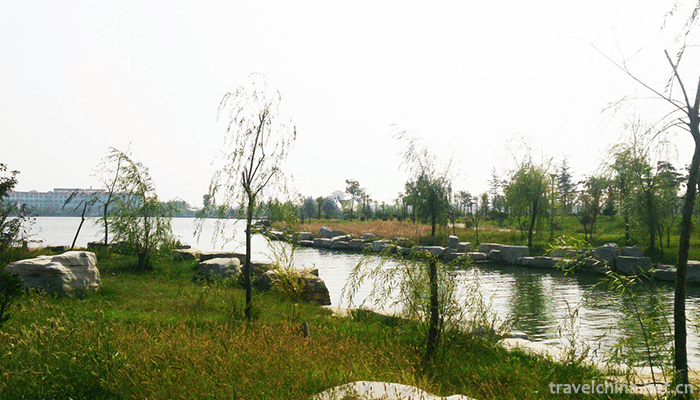

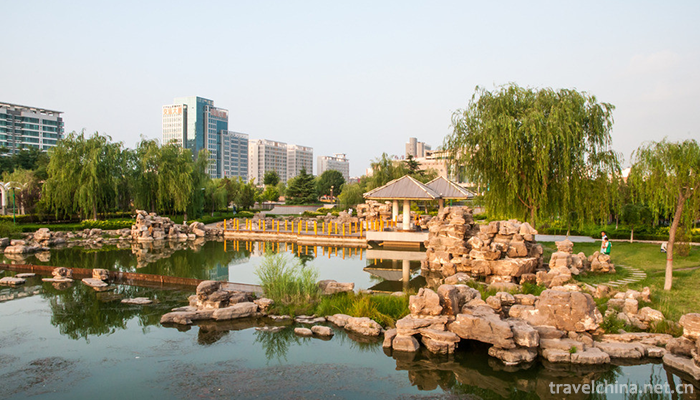
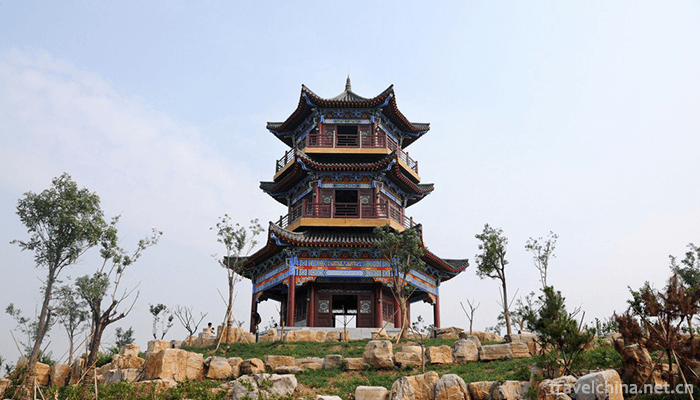

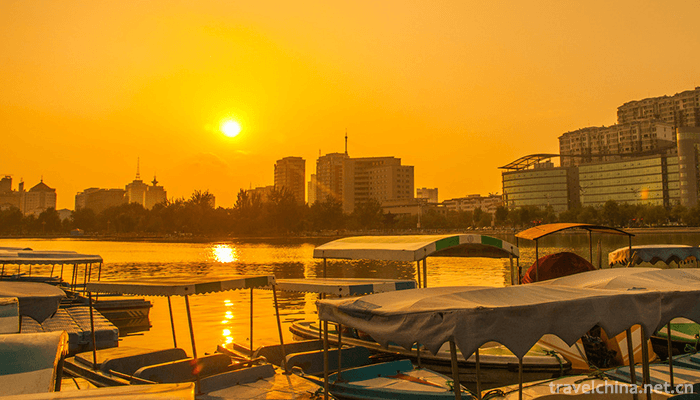
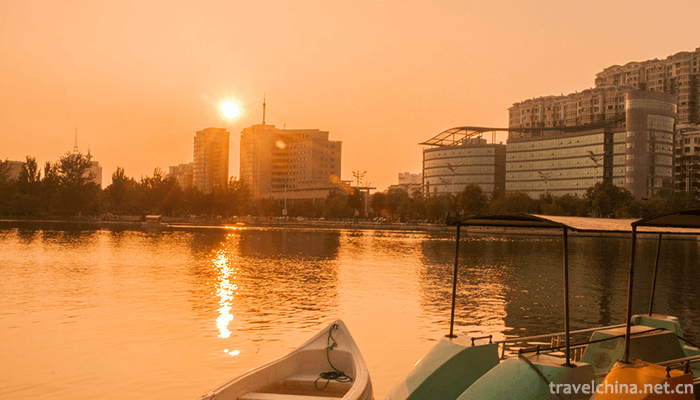
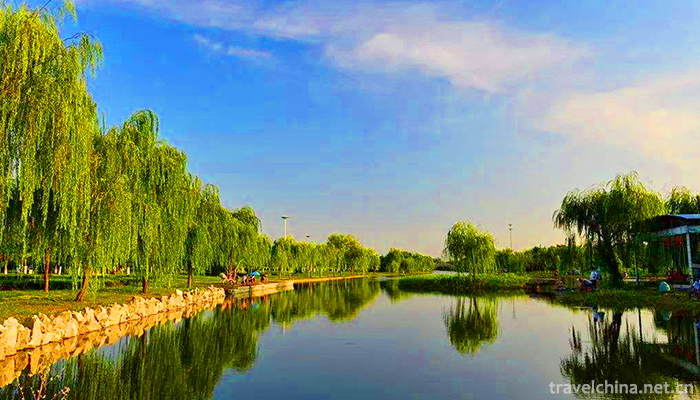
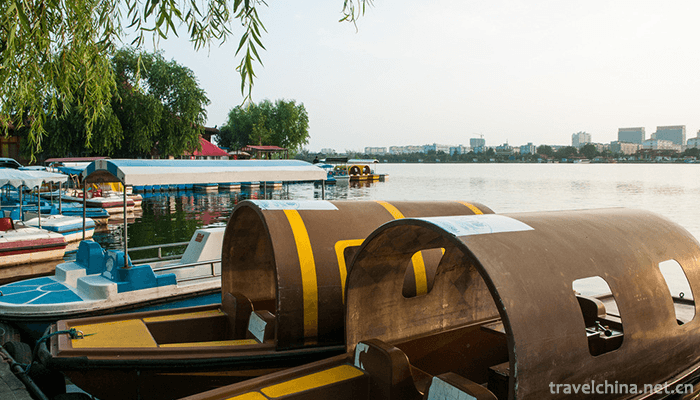
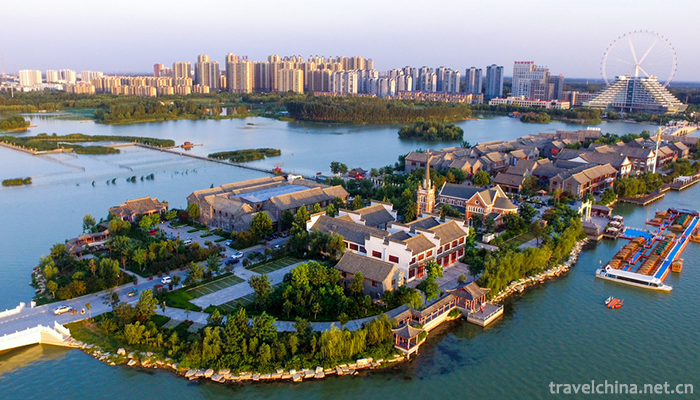
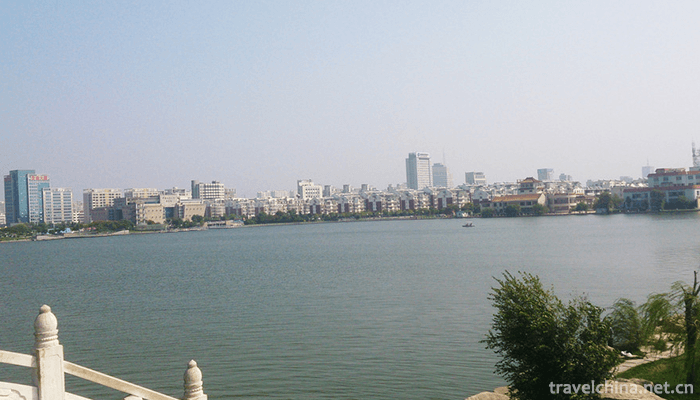
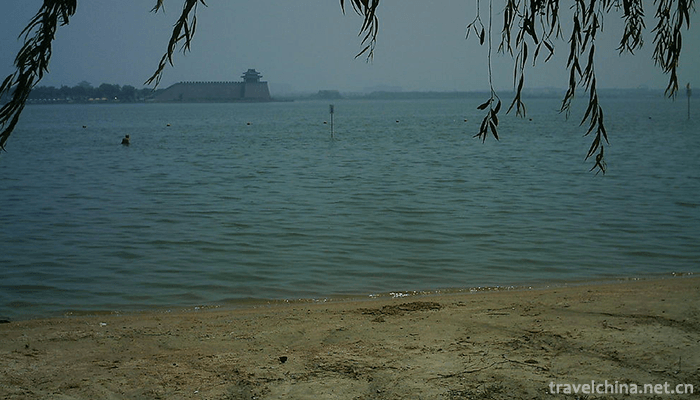

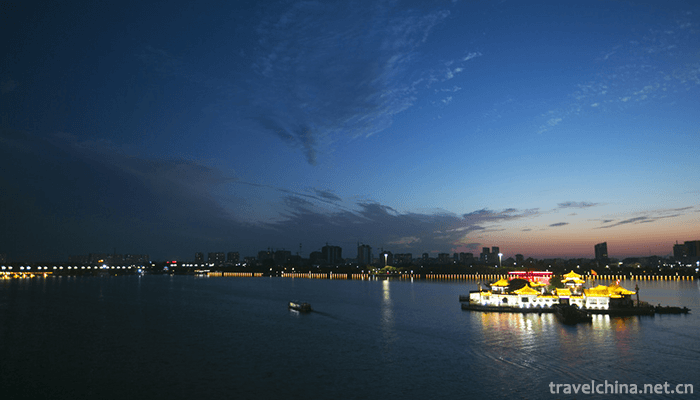
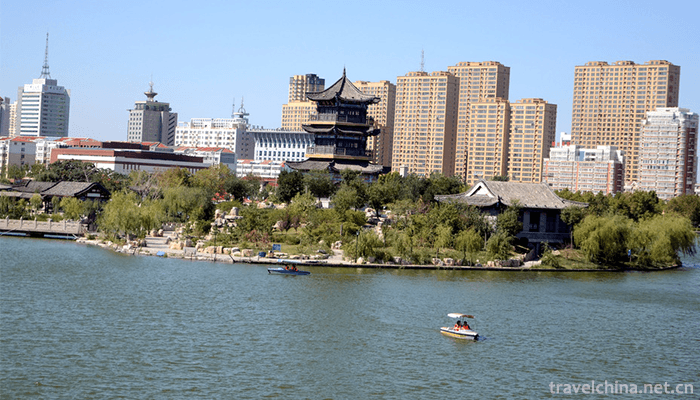
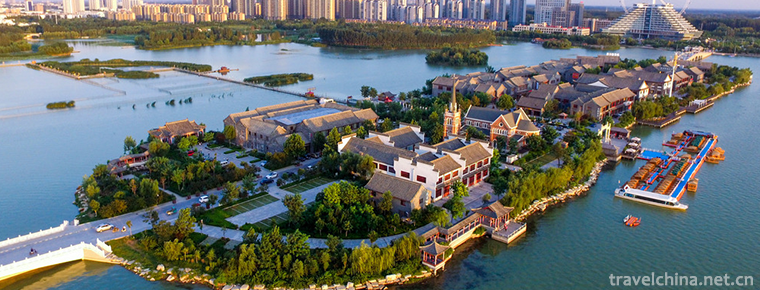
-
1.Dongpos braised pork
Dongpo meat, also known as roll meat and Dongpo stewed pork, is a famous traditional dish in Meishan and Jiangnan area
Time 2018-10-27 -
2.Jinshuitai Hot Spring Scenic Area
Jinshuitai Hot Spring is a hot spring resort built according to the national AAAA scenic standard. It is located in Shuitai Town, Xinxing County, Guangdong Province
Time 2019-01-27 -
3.Beipiao Folk Stories
Beipiao Folklore is a local folk literature in Liaoning Province. It includes eight categories: folklore, character legend, fantasy story, life story, animal and plant story
Time 2019-04-04 -
4.Craftsmanship of Lake Pen
Hubi craftsmanship, the traditional handicraft of Shanlian Town, Huzhou City, Zhejiang Province, is one of the national intangible cultural heritage.
Time 2019-05-03 -
5.Flower Drum Opera
Huagu opera, a kind of local opera in China, has the most identical names in the national local opera, usually referring to Hunan Huagu opera. Hubei, Anhui, Jiangxi, Henan, Shaanxi and other
Time 2019-05-04 -
6.Aquatic horsetail embroidery
Horsetail embroidery is a special embroidery technique inherited from generation to generation by Chinese aquarium women, which is the oldest and most national characteristic. It takes horse tail as a
Time 2019-06-16 -
7.Taoist Music of Xuanmiaoguan in Suzhou
The Taoist music of Suzhou, represented by the Taoist music of Xuanmiaoguan, belongs to the Zhengyi Taoist music, and is an integral art with the performing process of Zhai Yin Fa. It sings different
Time 2019-06-17 -
8.Folk Beating and Playing in Zhijiang
Zhijiang folk wind and beating music is a kind of traditional folk music art which is widely active in Zhijiang area of Hubei Province. After years of development and evolution, the folk blowing and p
Time 2019-07-25 -
9.Jiushi Scenic Area
Jiushi scenic area is located in Anning Township, Longmatan District, 8 km away from Luzhou city. It is named after the nine peaks in the scenic area, which are shaped like lions.
Time 2020-10-15 -
10.Liubeichi Park
Liubeichi park is located at No.4 Minjiang East Road, Yibin City, with an area of 238.18 mu. It is a national AAAA tourist attraction. It is a famous scenic spot and a key Park in Sichuan Province.
Time 2020-10-16 -
11.Animal resources in Neijiang
The animal resources in Neijiang are mainly livestock, poultry and some wild animals. Domestic animals include mammals, birds, insects, fish and domestic wild animals. There are pigs, cattle, sheep, rabbits and a small number of horses, mules and donkeys
Time 2020-12-16 -
12.Yibin water resources
Yibin city produces 614500 cubic meters of water per square kilometer per year. In addition to the amount of water from various rivers in the city, the city has a total annual water volume of 242.84 billion cubic meters, and the average annual water occupatio
Time 2020-12-18